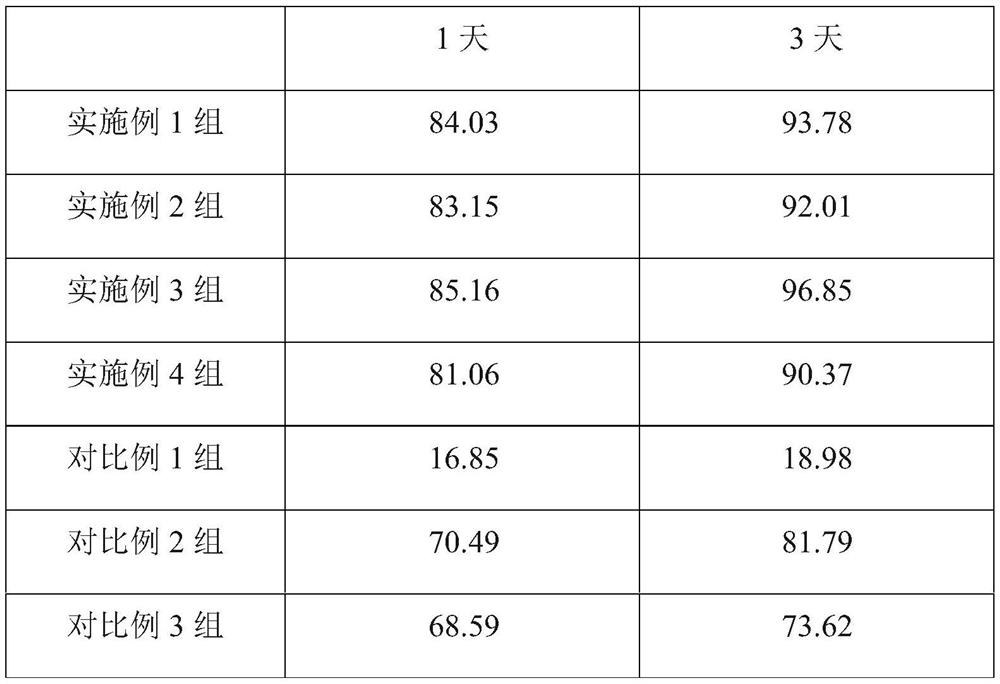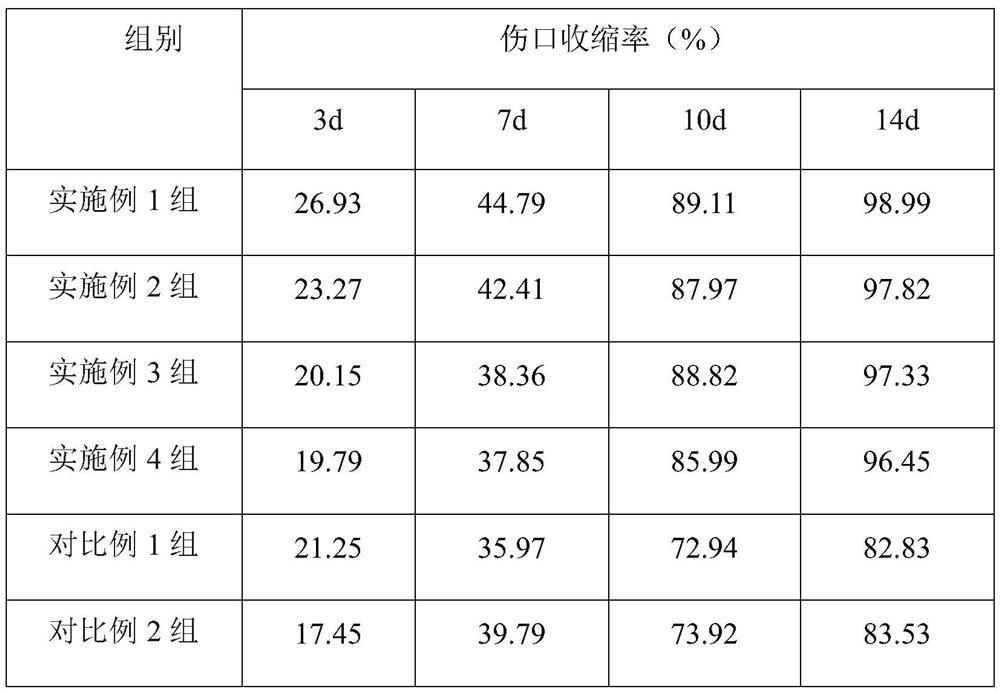Preparation and application of tissue repair-promoting hydrogels with both anti-tumor and antibacterial functions
A tissue repair and hydrogel technology, applied in the field of biomedical materials, can solve the problems of difficult tissue effective deep repair, inability to effectively inhibit tumor recurrence, and failure to inhibit tumor recurrence, so as to prevent and treat local tumor recurrence and metastasis, and the preparation method is simple. Reliable, scar tissue-inhibiting effect
- Summary
- Abstract
- Description
- Claims
- Application Information
AI Technical Summary
Problems solved by technology
Method used
Image
Examples
Embodiment 1
[0035] Embodiment 1 A preparation method of a tissue-repair-promoting hydrogel having both anti-tumor and antibacterial functions The preparation method of the tissue-repair-promoting hydrogel comprises the following steps:
[0036] S1: Weigh a certain mass of chitosan and dissolve it in a slightly acidic solution to make a chitosan solution with a concentration of 18 mg / mL;
[0037] S2: Weigh a certain amount of arginine and dissolve it in a slightly acidic solution to make an arginine solution with a concentration of 120 mg / mL;
[0038] S3: Add a certain amount of N-hydroxysuccinimide to the arginine solution obtained in step S2, wherein the molar ratio of N-hydroxysuccinimide to arginine is 2.5:1 to obtain an arginine A solution;
[0039] S4: Add a certain proportion of 1-ethyl-(3-dimethylaminopropyl)carbodiimide hydrochloride to the arginine A solution obtained in step S3, wherein 1-ethyl-(3-di The mol ratio of methylaminopropyl) carbodiimide hydrochloride and arginine is...
Embodiment 2
[0047] Example 2 A preparation method of a tissue-repair-promoting hydrogel having both anti-tumor and antibacterial functions The preparation method of the tissue-repair-promoting hydrogel comprises the following steps:
[0048] S1: Weigh a certain mass of chitosan and dissolve it in a slightly acidic solution to make a chitosan solution with a concentration of 50 mg / mL;
[0049] S2: Weigh a certain amount of arginine and dissolve it in a slightly acidic solution to make an arginine solution with a concentration of 150 mg / mL;
[0050] S3: Add a certain amount of N-hydroxysuccinimide to the arginine solution obtained in step S2, wherein the molar ratio of N-hydroxysuccinimide to arginine is 5:1 to obtain an arginine A solution;
[0051] S4: Add a certain proportion of 1-ethyl-(3-dimethylaminopropyl)carbodiimide hydrochloride to the arginine A solution obtained in step S3, wherein 1-ethyl-(3-di The mol ratio of methylaminopropyl) carbodiimide hydrochloride and arginine is 3:1,...
Embodiment 3
[0059] Example 3 A preparation method of a tissue-repair-promoting hydrogel having both anti-tumor and antibacterial functions The preparation method of the tissue-repair-promoting hydrogel comprises the following steps:
[0060] S1: Take a certain mass of chitosan and dissolve it in a slightly acidic solution to make a chitosan solution with a concentration of 1 mg / mL;
[0061] S2: Weigh a certain amount of arginine and dissolve it in a slightly acidic solution to make an arginine solution with a concentration of 100 mg / mL;
[0062] S3: Add a certain amount of N-hydroxysuccinimide to the arginine solution obtained in step S2, wherein the molar ratio of N-hydroxysuccinimide to arginine is 1.5:1 to obtain an arginine A solution;
[0063] S4: Add a certain proportion of 1-ethyl-(3-dimethylaminopropyl)carbodiimide hydrochloride to the arginine A solution obtained in step S3, wherein 1-ethyl-(3-di The molar ratio of methylaminopropyl) carbodiimide hydrochloride and arginine is 0....
PUM
| Property | Measurement | Unit |
|---|---|---|
| molecular weight | aaaaa | aaaaa |
| molecular weight | aaaaa | aaaaa |
| molecular weight | aaaaa | aaaaa |
Abstract
Description
Claims
Application Information
 Login to View More
Login to View More - R&D
- Intellectual Property
- Life Sciences
- Materials
- Tech Scout
- Unparalleled Data Quality
- Higher Quality Content
- 60% Fewer Hallucinations
Browse by: Latest US Patents, China's latest patents, Technical Efficacy Thesaurus, Application Domain, Technology Topic, Popular Technical Reports.
© 2025 PatSnap. All rights reserved.Legal|Privacy policy|Modern Slavery Act Transparency Statement|Sitemap|About US| Contact US: help@patsnap.com



